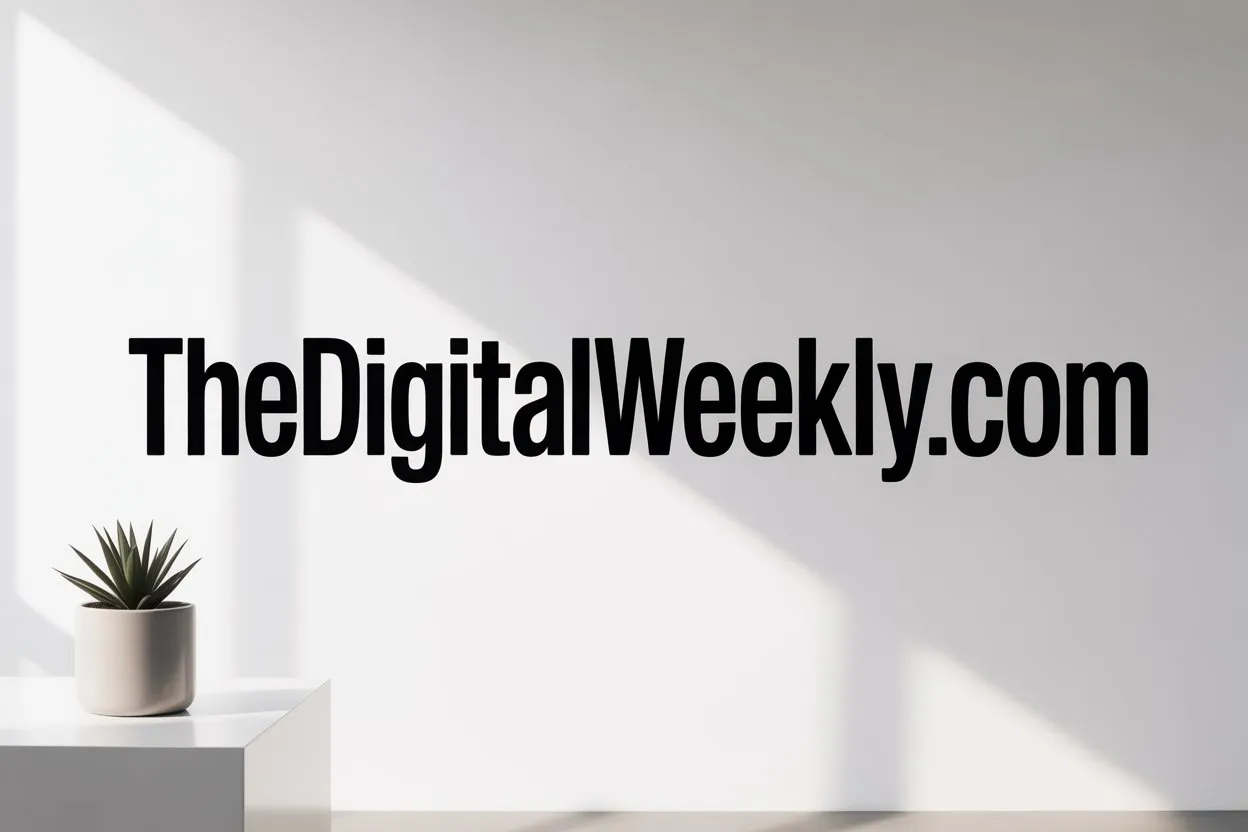Thedigitalweekly.com is a modern digital media publication that covers entertainment, games, movies, news, and TV shows with an accessible, timely, and helpful approach designed for readers seeking concise updates and practical explainers. The goal of this blog post is to outline how The Digital Weekly works, what content resonates, how to structure stories for discoverability, and how contributors can pitch ideas effectively while aligning with the site’s categories and standards. This guide will also reference policies and expectations that ensure a consistent and trustworthy reading experience under The Digital Weekly’s terms and conditions.
What thedigitalweekly.com Stands For
thedigitalweekly.com positions itself as a new-generation news media company focused on keeping audiences updated with the right mix of tech-enabled solutions and culture coverage across entertainment and screens. The brand identity blends fast, useful reads with deeper explainers so that readers can both catch up quickly and dive into context when needed. The Digital Weekly emphasizes readability, service journalism, and approachable analysis that helps audiences navigate streaming releases, game updates, and topical news without jargon.
Core Coverage Areas at The Digital Weekly
The Digital Weekly organizes coverage into several interconnected sections that reward both habitual browsing and targeted searching by topic and franchise. The site highlights entertainment in the broad sense, spanning film and television news, release calendars, cast and crew explainers, episode guides, and industry updates, which give readers a single source for what to watch and why it matters right now. The games section complements this with platform changes, patch summaries, beginner-friendly guides, and policy explainers that relate to player experience and community trends, staying true to The Digital Weekly’s helpful service tone.
Also Read- Factsreader.com – A simple and detailed look at this website
Editorial Voice and Reader Promise
The editorial voice at The Digital Weekly is accessible, timely, and practically oriented, prioritizing clarity over hype so that readers can act on what they learn—whether that means deciding what to stream, how to interpret a studio announcement, or how to adjust a game setting after a feature update. This voice is not only a stylistic choice but a service promise to the audience: each piece should answer a clear question, reduce friction, and save time while maintaining accuracy and context. The Digital Weekly uses straightforward headlines, scannable subheads, and concise paragraphs to ensure that information is digestible on both desktop and mobile, reflecting its digital-first, modern media approach.
How thedigitalweekly.com Uses SEO Without Compromising Quality
Search-engine visibility is crucial for a publication that aims to be a practical daily companion, and The Digital Weekly integrates keyword choices naturally into value-driven content. Articles should start with an H1 containing the primary topic term, followed by H2 subheads that map to reader intent segments such as “What changed,” “Release dates,” “Where to watch,” “How it affects players,” or “FAQs,” depending on the topic area. Internal linking should connect to relevant category hubs and evergreen explainers to help readers move from breaking news to deeper context, with slugs that are short and descriptive for long-term navigability aligned with The Digital Weekly’s publishing structure and guidelines.
Article Formats That Work Best
The Digital Weekly favors three adaptable story types that fit across entertainment, games, movies, news, and TV shows in a way that balances speed and depth for varied audience needs. Quick briefs in the 300 to 500 word range offer “what happened,” “why it matters,” and “what to watch next,” letting readers capture the essence of a breaking update with minimal time commitment while maintaining factual integrity tied to official sources. Explainers in the 800 to 1,200 word range provide a compact timeline, stakeholder context, implications, and frequently asked questions, which is especially helpful for platform or studio policy changes impacting user experience or content availability.
How-To Guides and Service Journalism at thedigitalweekly.com
Thedigitalweekly.com also publishes how-to and setup guides in the 700 to 1,000 word range that translate complicated platform changes or new features into stepwise instructions that are easy to follow. These guides may include practical tips about settings, parental controls, region availability, or subscription options, always prioritizing clarity and updated facts drawn from primary sources. The tone of these guides remains consistent with thedigitalweekly.com voice by focusing on usefulness, plain language, and up-to-date information that aligns with the site’s standards and terms.
How to Pitch The Digital Weekly
The Digital Weekly encourages contributor pitches through its “Write for us” channel, asking writers to submit original, English-language articles that meet baseline quality and length expectations while fitting category focus areas like Entertainment, Games, Movies, News, and TV shows. A strong pitch to The Digital Weekly typically includes a concise headline, a two to three sentence value proposition that centers reader benefit, and a short outline of subheads mapping to the coverage approach outlined in this guide. Pitches should also call out relevant internal linkage opportunities and note any official sources or trade publications that will underpin the story’s factual backbone in keeping with The Digital Weekly’s standards and content policies.
What Editors Expect from Contributors
Editors at The Digital Weekly expect contributors to read the contributor page and follow approach, voice, and structure guidelines to streamline reviews and ensure audience trust. Beyond basic originality and English language requirements, editors look for timely relevance, a service angle, and a clear answer to a concrete reader question for each submission. Contributors should prioritize accuracy by referencing primary sources wherever possible and aligning with The Digital Weekly’s terms and conditions regarding acceptable use and editorial standards for publication on the website.
Examples of Stories That Fit thedigitalweekly.com
A seasonal streaming primer, such as a fall series guide, can summarize release dates, casts, platforms, and where to watch across major services, using subheads for each franchise or network and concluding with an FAQ that addresses regional availability or subscription tiers. A platform policy explainer for a major game or creator economy change can start with what changed and when, then provide context about why the change matters for players or viewers, followed by step-by-step actions users can take to adapt and settings they may need to adjust. A movie or TV franchise timeline can list chronological entries with short plot anchors and cast highlights, making it easy for readers to jump in at the right starting point with links to related articles for deeper reading on characters, lore, or production shifts under The Digital Weekly’s entertainment remit.
Structuring a The Digital Weekly Explainer
A well-structured The Digital Weekly explainer opens with a concise lede that identifies what changed, why it matters, and who is impacted in the first three sentences to capture intent quickly. The next section often establishes a short timeline that uses dates or clear phases and spotlights official announcements to ensure the article prioritizes accuracy. The remaining sections address practical implications—such as where to watch, content availability windows, platform features, or how to implement new settings—concluding with a compact FAQ that answers the most common reader questions associated with the topic, in line with how The Digital Weekly emphasizes service journalism.
Maintaining Trust and Compliance
Trust is a core requirement for a modern publication, and The Digital Weekly’s terms and conditions reinforce responsible use, expectations for proper conduct, and the contractual framework for accessing the content and services provided on the site. Contributors and readers alike should understand that all published materials are governed by these terms, which outline rights, limitations, and acceptable usage patterns for the platform. When submitting or engaging with content at The Digital Weekly, compliance with these standards helps maintain a safe, reliable environment that enhances the experience for the entire community.
Keywords and Discoverability for thedigitalweekly.com
Using the keyword “The Digital Weekly” contextually in titles and introductions helps establish topical relevance while avoiding keyword stuffing, preserving readability and trust. Subheadings should integrate secondary descriptors such as “TV shows,” “movies,” “games,” and “news” where natural, since these mirror the site’s taxonomy and how audiences search for content. Within the body, referencing “The Digital Weekly” in strategic positions such as the opening paragraph, the contributor section, and the conclusion signals continuity of the site’s brand and helps align internal links to appropriate category or contributor pages under consistent navigational frameworks.
Internal Linking and Navigation
thedigitalweekly.com benefits from a clear internal linking strategy that routes readers to category hubs and evergreen pages that extend dwell time and reader value. Articles should link forward and backward across franchises, seasonal guides, and explainers whenever the connection is genuinely helpful and adds context to the current story. This approach preserves editorial integrity while improving navigability and demonstrating the depth of The Digital Weekly’s archive across entertainment, games, movies, news, and TV show coverage.
How to Choose Timely Topics for thedigitalweekly.com
Topic selection should consider release calendars, platform updates, seasonal shifts, and moments that create natural reader questions about availability, settings, or impact. Monitoring official studio and platform channels provides primary source material that keeps The Digital Weekly’s reporting and explainers current and authoritative at the moment readers need guidance. When a story emerges, framing it in The Digital Weekly’s service voice—what changed, what it means, how to act—ensures the piece slots into the site’s mission while maximizing discoverability and utility.
Also Read – Maxxfour.com: A Deep Look at Its Pros, Cons & Safety
Tone and Style Consistency Across The Digital Weekly
Writing for thedigitalweekly.com means keeping sentences crisp, paragraphs short, and subheads descriptive so readers can scan quickly and find answers without friction. Quotes and screenshots should be used to clarify rather than to pad word count, and data should be derived from reliable, attributable sources that improve accuracy and depth. The cumulative effect is a publication that feels coherent across categories, with each story holding to The Digital Weekly’s brand of accessible expertise.
Onboarding and Contributor Workflow
Prospective contributors should begin by reading The Digital Weekly’s contributor page in full to understand expectations for originality, language, and category fit before submitting a pitch or manuscript. After aligning the idea with the site’s coverage and voice, a contributor can present a headline, a brief summary, a subhead outline, and a list of likely official sources that will support the story. This preparation respects editorial time, increases acceptance chances, and helps keep The Digital Weekly’s pipeline filled with timely, reader-first stories.
Why The Digital Weekly Emphasizes Service Journalism
The Digital Weekly’s audience wants both awareness and empowerment, which makes explainers and how-tos a perfect match for the brand. Service journalism bridges breaking updates to practical action, transforming a platform announcement or a release slate into steps and decisions that are easy to follow. This orientation to helpfulness differentiates The Digital Weekly and defines the value proposition the site brings to its readers across entertainment, games, movies, news, and TV shows.
From Idea to Published Piece at The Digital Weekly
Turning a raw idea into a published article at The Digital Weekly involves three core steps: refine the angle to a concrete reader question, design a subhead structure that answers that question efficiently, and cite official sources for accuracy. Writers should revisit and optimize the headline for clarity and search intent while maintaining a natural tone that reflects the publication’s voice. Finally, a pass for internal links to relevant hubs or evergreen guides ensures the piece is integrated into The Digital Weekly’s content network, helping readers move from one useful article to another.
Ethics, Accuracy, and Updates
Ethical publishing at thedigitalweekly.com includes crediting sources, avoiding plagiarism, and making timely updates as facts evolve, particularly in fast-moving entertainment and platform contexts. Corrections and clarifications should be promptly handled, and substantive updates should be clearly communicated within the article if they alter guidance or conclusions. These practices maintain reader trust and adhere to site policies that govern the use and publication of content on thedigitalweekly.com.
How The Digital Weekly Builds Community Through Content
By combining short updates with deeper context pieces, The Digital Weekly creates reliable habits for readers who come for quick answers and stay for well-structured explainers. The consistent voice and navigable structure let new visitors become regulars, moving confidently across entertainment, games, movies, news, and TV show topics without feeling lost. This consistent experience, supported by clear terms and transparent guidelines, builds a community that trusts The Digital Weekly to deliver timely, useful, and accurate coverage.
Conclusion: Why thedigitalweekly.com Matters Today
Thedigitalweekly.com stands out because it values reader time and meets reader intent with clear, structured coverage across entertainment and screens, supported by responsible policies and contributor guidance. For writers, thedigitalweekly.com is an opportunity to provide practical, timely, and well-sourced articles to an audience that rewards clarity and usefulness across categories, guided by the site’s contributor instructions and terms. For readers, thedigitalweekly.com represents a consistent, approachable destination for understanding what is happening, what it means, and how to act across the fast-evolving landscape of movies, TV shows, games, and news.
FAQs
1: What is thedigitalweekly.com and what kind of content does it publish?
thedigitalweekly.com is a contemporary entertainment and digital culture site that focuses on timely news, explainers, and how-to guides across movies, TV, and games, emphasizing clarity, accuracy, and practical takeaways.
2: How should contributors format posts for thedigitalweekly.com?
Articles for thedigitalweekly.com should start with a direct lede, use clear subheadings aligned to reader questions, keep paragraphs concise, and include internal links where they genuinely add context rather than for keyword repetition.
3: Which topics typically perform best on thedigitalweekly.com?
Seasonal streaming guides, franchise timelines, renewal and cancellation explainers, platform and policy updates, and actionable how-to tutorials tend to resonate on thedigitalweekly.com because they solve concrete reader problems.
4: How does thedigitalweekly.com balance SEO and readability?
thedigitalweekly.com favors a single descriptive H1, purposeful H2s, concise URLs, and natural language in body copy, using the site name sparingly and only where it adds clarity or navigational value.
5: What sourcing and update practices does thedigitalweekly.com expect?
Posts on thedigitalweekly.com should rely on primary sources like official announcements and platform posts, include timestamped updates as facts evolve, and use transparent disclosures whenever they are relevant.



